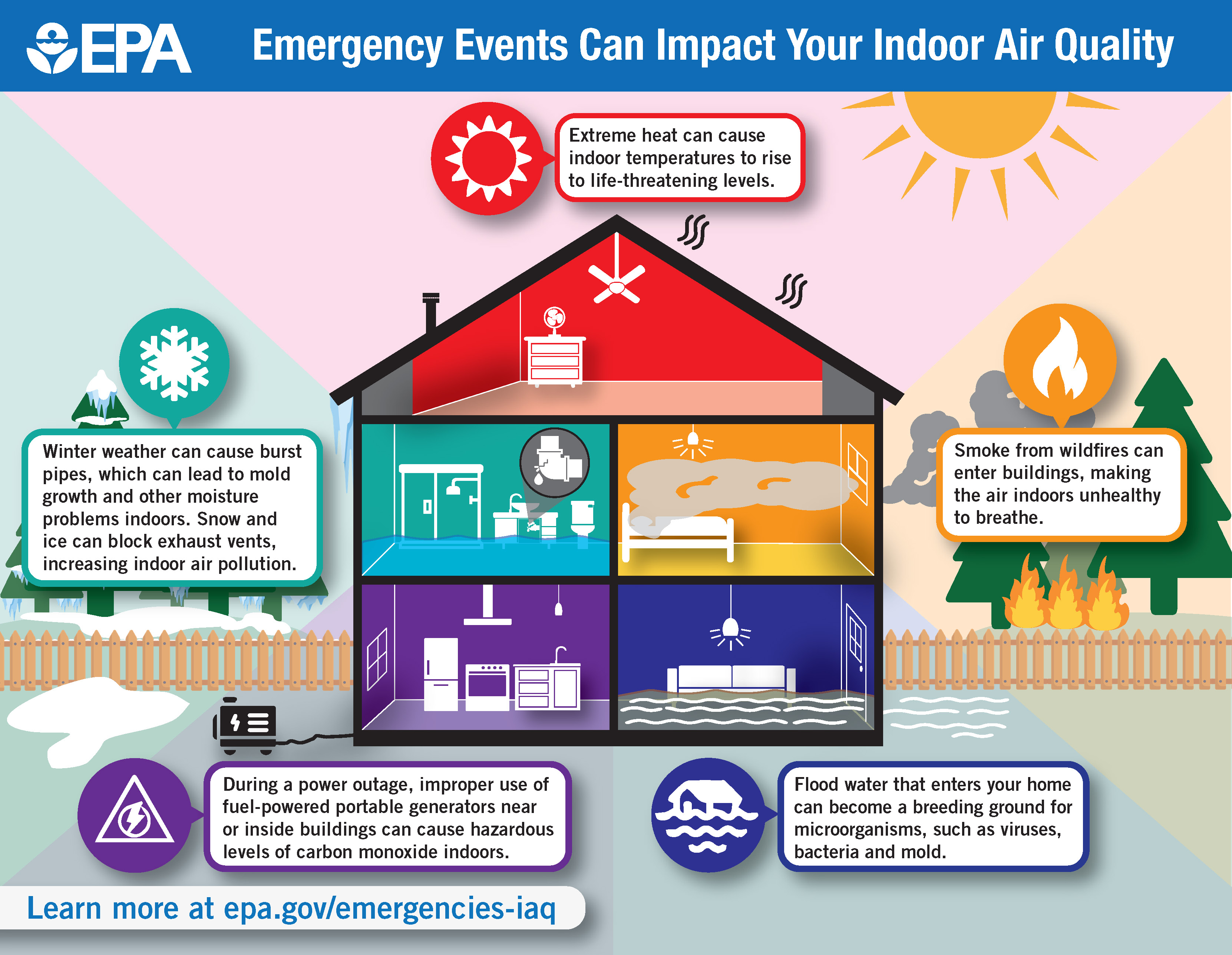Emergency Events Can Impact Your Indoor Air Quality Infographic
People spend most of their time indoors and rely on indoor spaces for shelter. Weather-related and man-made emergencies can create a range of hazards in indoor environments.
Learn how emergency events can impact your indoor air quality.

Text Version of the Infographic
Emergency Events Can Impact Your Indoor Air Quality
- Extreme heat can cause indoor temperatures to rise to life-threatening levels.
- Smoke from wildfires can enter buildings, making the air indoors unhealthy to breathe.
- Flood water that enters your home can become a breeding ground for microorganisms, such as viruses, bacteria and mold.
- During a power outage, improper use of fueled-powered, portable generators near or inside buildings can cause hazardous levels of carbon monoxide indoors.
- Winter weather can cause burst pipes, which can lead to mold growth and other moisture problems indoors. Snow and ice can block exhaust vents, increasing indoor air pollution.
